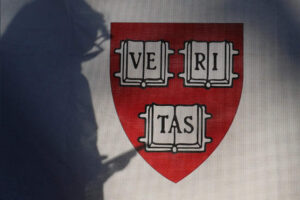
Impact of Declining International Students on US College Finances, ETEducation

New Delhi: For a desi sophomore at a private mid-tier US college in the Bible Belt, the thinning ranks of international students are hard to miss. When arriving as a freshman, seniors reflected a global mix, Indians among the most visible. This year’s incoming class is noticeably less diverse.
Dwindling visa approvals and murmurs of post-study work rights overhaul have slowed international enrolments, say study abroad experts, thereby delivering a financial gut punch to America’s mid-tier private universities — institutions already struggling with shrinking domestic numbers and mounting borrowing costs.
“International students represent approximately 15-20% of the revenue base for a mid-tier university,” said Lil Bremermann-Richard, group chief executive of the Oxford International Education Group (OIEG). Given its material contribution to overall institutional stability, she said, “A reduction in this segment would therefore pose a significant financial risk.”
OIEG has observed a 60% decline in the number of international students pursuing education in the US, she said.
Due to access to multiple revenue streams — such as uncapped fees from in-state/out-of-state domestic students, international students, alumni contributions, endowments and access to the debt market — American mid-tier universities are more resilient than their counterparts in the other three of the “Big Four” international education destinations: the UK, Canada and Australia, say experts.
However, since not all universities are created equal, access to the debt market comes at a steep price. While Ivy League colleges can borrow at spreads as low as 0.3 percentage points over treasuries, mid-tier private universities often pay more than 2 points above.
Bremermann-Richard said: “The higher education sector in the US is currently experiencing significant operational and financial strain. These institutions, which function within a business framework, are acutely aware of the risks associated with the potential decline of a key revenue stream. Demand has already been adversely affected, and this uncertainty is expected to continue for the foreseeable future.”
Saurabh Arora, founder of University Living, said: “Small and mid-ranked private colleges, often with modest endowments and high discount rates for domestic students, rely heavily on international students who pay closer to full fee. When international numbers soften, these colleges see an immediate gap in their budgets.”
International student fees not just help subsidise parts of the university budget but also impact the larger ecosystem of the cities – especially given the high number of college towns in the US, according to Prashant Tibrewal, founder, Alum-n-i.
International students, who often pay the full sticker price for tuition, drive in crucial surplus revenue that these universities use well beyond classroom instruction. Aditya Shanker Raghuwanshi, chief executive of Masterclass Space, said: “This money helps subsidise costly areas such as research labs, graduate stipends and new campus facilities, and it even offsets the heavy expenses of athletic programmes like American football, which usually run at a loss. At many private colleges, it also cross-subsidises financial aid for domestic students.”
International students have become the financial lifeline for many mid-tier private universities in the US, Arora said, “These campuses face shrinking domestic enrolment and historically high tuition discounts for American students. In that environment, full-fee or close-to-full-fee paying international students represent the most reliable stream of revenue.”
Experts said most Indian students choosing mid-tier US universities come from tier-2/3 cities, metros and upper-middle-income families, with budgets typically ranging from $40,000–60,000 per year. They show a strong preference for STEM (science, technology, engineering and mathematics) master’s, business analytics, computer science/information systems, and applied engineering bachelor’s programmes at private or regional universities, particularly those offering OPT pathways.
“Indians are particularly valuable because they make up one of the fastest-growing segments of international students in the US. Also, most students often pursue STEM programmes, which are a perfect fit for private universities because of their high tuition fees and lower aid,” Raghuwanshi said. “It’s a setup of mutualism, and Indians as students are vital to keep these mid-tier universities functional.”
Between January and May 2025, F-1 (student) visa issuances by the US declined by around 14–22% from a year earlier, with Indian applicants seeing a sharper dip than the global figures.
“The class size at mid-tier universities is relatively smaller than the top-tier ones. Even a minor change in the number of full-tuition-fee paying international students may significantly impact the university’s annual budgets and revenue,” Tibrewal added.
“With US domestic enrolments shrinking, Indian students have become an increasingly important pillar of support,” Leverage Edu founder Akshay Chaturvedi said. “While top-ranked US universities may remain resilient, smaller private colleges and liberal arts schools with thinner endowments might experience some effect.”
Source link



